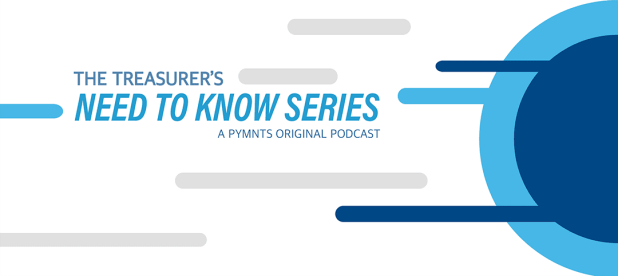Citi On Simplifying Cross-Border Payments

The buyer is in Canada. The seller is in Singapore. The transaction wends its way across borders, in the middle of the night, settling instantly.
In the always-on, 24/7/365 economy, payments that circle the globe should conceivably be as simple as those made in a peer-to-peer (P2P) transaction. The reality? Well, cross-border payments are fraught with friction, especially when it comes to business-to-business, or B2B.
Amit Agarwal, global head of cross-border payments at Citi, told Karen Webster in the latest installment of the “What Treasurers Need to Know” podcast series that the world is becoming flatter and supply chains are getting longer, stretching across borders and currencies.
Technology, improvements in logistics and, of course, new innovations in payments have all played a role in bringing trade to an ever-broadening global stage.
Agarwal noted that trade is becoming global at an accelerating pace — notwithstanding the headlines centered on trade wars between the United States and China.
Macro Trends as Tailwinds
Agarwal pointed to macro trends as tailwinds, including the entrenchment of social media, digital advertising, the lower cost of technology and a growing middle class evident in several emerging economies around the world.
Only 20 years ago, eCommerce was an unheard-of notion. “Today, everyone has a mobile phone,” he said, noting that as much as 35 percent of the world population wields a smartphone. And, he added, as much as 50 percent of digital commerce is done through mobile means, and is expected to hit 70 percent in just a few short years. Alibaba racked up billions of dollars in sales just a few minutes into its Singles Day held earlier this year.
“Technology, increasingly, is enabling the current model of cross-border trade,” said Agarwal.
Disposable incomes have grown dramatically over the past several years, he remarked, and the middle class that spans countries across the globe is spending $25 trillion dollars annually and will spend an additional $30 trillion by 2030. China stands as the largest market, with marked growth seen in Africa, the rest of Asia and elsewhere.
Against that backdrop, to enable the seamless flow of commerce across consumers, companies and supply chains, Agarwal said, payments need to seamless, too. He told Webster that no matter the transaction — whether B2C, C2B or B2B — it is of critical importance for supply chain ecosystems to ascertain that the full value of payments will come, without delay, into accounts once transactions are complete.
“This boils down to an efficient cash conversion cycle, to efficient working capital management, and also minimizes the need for companies to borrow money,” Agarwal said. That transparency is on offer in domestic payments, and less so for cross-border payments.
The Challenges of Cross-Border
Agarwal noted that cross-border payments carry inherent challenges, which can be traced to control over FX impact or with documentation tied to compliance. Done through traditional means, especially in developing markets, it can take months for suppliers and buyers to transact, as banks bundle payment requests and deliveries and extend credit through inefficient, paper-based processes.
Citi, for its part, has been integrating cross-border payments with instant payments offerings to help address some of those challenges.
Other technologically advanced offerings can help unlock value and speed up payments in cross-border trade, said Agarwal. He pointed to SWIFT, the global messaging service, which stands as a markedly secure network for delivering tens of millions of messages on a daily basis across 11,000 financial institutions.
SWIFT introduced its gpi standard in 2017, which helps to speed up international payments (payments are typically credited within 30 minutes) and makes them more transparent with enhanced details on costs, FX and settlement.
API Advantages
In addition to SWIFT, Agarwal said, “API, I feel, is arguably one of the most important technological developments in our space in recent times.” Traditionally, payments-centered interactions between companies could be likened to crafting emails — they need to be created, typed, sent, delivered, opened and deciphered. He said APIs can be likened to face-to-face communications, where information is exchanged in real time.
After all, Agarwal noted, cross-border trade is “not just about the payment process – it’s also about the underlying documentation, which oftentimes can be an extremely onerous undertaking.” That’s especially true when navigating a regulatory environment where compliance means adhering to documents that run hundreds of pages.
The Partnership Model
In the drive to bring cross-border trade and payments into the digital age, Agarwal said, collaboration between banks and FinTechs can yield mutual benefits.
“Banks can benefit from FinTechs, which have very specialized knowledge, and their approach to leveraging technology to create new and sometimes niche services and products to existing financial services offerings.” The FinTechs, in turn, benefit from the banks’ access to large customer bases.
“This need not be a complex business,” said Agarwal of B2B and cross-border trade.
“Cross-border payments at its most basic level is two domestic payments with FX sitting in between,” he told Webster. “My mandate is this notion that we want to allow our clients to make payments from anywhere on the planet to anywhere on the planet as if there are no borders, as if there are no currencies — and as if there are no constraints.”
